Related Research Articles
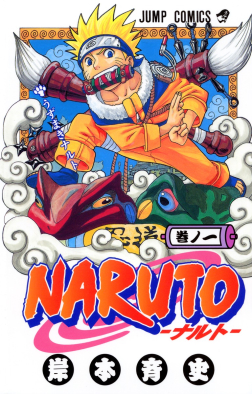
Naruto is a Japanese manga series written and illustrated by Masashi Kishimoto. It tells the story of Naruto Uzumaki, a young ninja who seeks recognition from his peers and dreams of becoming the Hokage, the leader of his village. The story is told in two parts: the first is set in Naruto's pre-teen years, and the second in his teens. The series is based on two one-shot manga by Kishimoto: Karakuri (1995), which earned Kishimoto an honorable mention in Shueisha's monthly Hop Step Award the following year, and Naruto (1997).

Ehrgeiz, fully titled Ehrgeiz: God Bless the Ring, is a 3D fighting video game developed by DreamFactory and published by Namco in 1998 for the arcade platform. It was first ported to the PlayStation and published by Square Co. in 1998, then to Japan's PlayStation Network by Square Enix in 2008.

Tobal No. 1 is a fighting video game for the PlayStation developed by DreamFactory and published by Square in 1996. The game was DreamFactory's first release, as well as Square's first release on the CD-based console.

Naruto Uzumaki is the titular protagonist of the manga Naruto, created by Masashi Kishimoto. He is a ninja from the fictional Hidden Leaf Village. As a boy, Naruto is ridiculed and ostracized on account of the Nine-Tailed Demon Fox—a malevolent creature that attacked Konohagakure—that was sealed away in his body. Despite this, he aspires to become his village's leader, the Hokage, in order to receive their approval. His carefree, optimistic, and boisterous personality enables him to befriend other Konohagakure ninja, as well as ninja from other villages. Naruto appears in the series' films and in other media related to the franchise, including video games and original video animations (OVA), as well as the sequel Boruto: Naruto Next Generations, where he is the Hokage, and his son, Boruto Uzumaki, is the protagonist.

Sasuke Uchiha is a fictional character in the Naruto manga and anime franchise created by Masashi Kishimoto. Sasuke belongs to the Uchiha clan, a notorious ninja family, and one of the most powerful, allied with Konohagakure. Most of its members were massacred by Sasuke's older brother, Itachi Uchiha, before the series began, leaving Sasuke one of the few living. Despite becoming empathetic toward his teammates Naruto Uzumaki and Sakura Haruno, Sasuke's feelings of powerlessness force him to abandon his friends and his home in his quest to become stronger, and to find Orochimaru. Sasuke appears in several of the series' animated feature films and related media, including video games, original video animations (OVAs), and Boruto: Naruto the Movie (2015) and its manga sequel, Boruto: Naruto Next Generations (2016), in which he is depicted as a vigilante supporting his village and a mentor to Naruto's son Boruto Uzumaki.
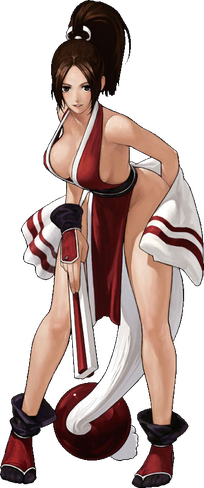
Mai Shiranui is a fictional character in the Fatal Fury and The King of Fighters series of fighting games by SNK. She has also appeared in other media of these franchises and in a number of other games since her debut in 1992's Fatal Fury 2 as the first female character in an SNK fighting game. She also appears in the games' various manga and anime adaptations and plays a leading role in the live-action film.
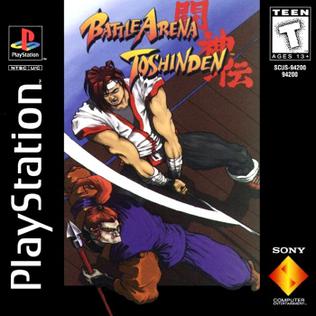
Battle Arena Toshinden is a fighting video game developed by Tamsoft and published by Takara for the PlayStation. Originally released in 1995, it was released internationally by Sony Computer Entertainment, followed by 1996 ports for the Sega Saturn, Game Boy and MS-DOS. It was one of the first fighting games, after Virtua Fighter in 1993 on arcade and console, to boast polygonal characters in a 3D environment, and features a sidestep maneuver which is credited for taking the genre into "true 3D."

Rock Lee is a fictional character in the anime and manga series Naruto and Naruto Shippuden created by Masashi Kishimoto. At first Masashi designed Lee to symbolize human strength. In the anime and manga, Lee is a ninja affiliated with the village of Konohagakure, and is a member of Team Guy, which consists of himself, Neji Hyuga, Tenten, and Might Guy—the team's leader. Unable to use most ninja techniques, Lee dedicates himself to using solely taijutsu, ninja techniques similar to martial arts. Lee dreams of becoming a "splendid ninja" despite his inabilities. Lee has appeared in several pieces of Naruto media, including the third and fourth featured films in the series, the third original video animation, and multiple video games.
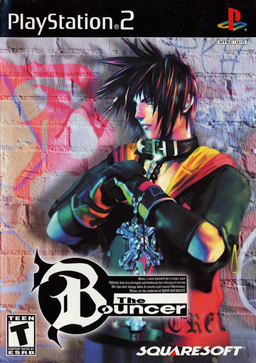
The Bouncer is a 2000 beat 'em up video game for the PlayStation 2 co-developed by Squaresoft and DreamFactory. It was published in Japan by Squaresoft in December 2000, in North America by Square Electronic Arts in March 2001, and in Europe by Sony Computer Entertainment Europe in June 2001. The game was produced by Shinji Hashimoto, co-directed by Takashi Tokita and Seiichi Ishii, and features character designs by Tetsuya Nomura, and music by Noriko Matsueda and Takahito Eguchi.
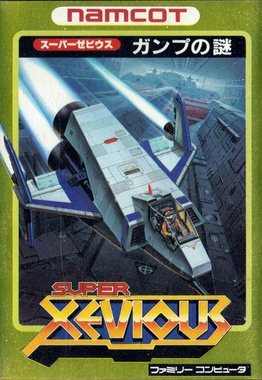
Super Xevious: GAMP no Nazo is a 1986 vertically scrolling shooter video game developed and published by Namco for the Family Computer in Japan. It is the sequel to Xevious, a popular arcade game released in late 1982, and the fourth installment in the Xevious franchise overall. The player controls a spaceship named the Solvalou in its mission to destroy a powerful supercomputer named GAMP, which took over Earth during an ice age. GAMP no Nazo features a heavy focus on puzzle-solving, with each of the game's 21 levels posing a puzzle that must be solved to progress.

Naruto: Ultimate Ninja, known in Japan as the Naruto: Narutimate Series, is a series of fighting video games, based on the popular manga and anime series Naruto by Masashi Kishimoto. It was developed by CyberConnect2, and published by Bandai and later Bandai Namco Games. The first game was released in 2004 for the PlayStation 2, and was followed by four more titles for the system, as well as five spinoffs for the PlayStation Portable. A follow-up for the PlayStation 3, titled Naruto: Ultimate Ninja Storm, was the first to feature three-dimensional battles, and began the long-running Storm sub-series. While starting out as a series exclusive to the PlayStation family of systems, the series has also been present on Xbox and PC platforms since the release of Naruto Shippuden: Ultimate Ninja Storm 2 for the Xbox 360 and Naruto Shippuden: Ultimate Ninja Storm 3 Full Burst for Windows, respectively. Latest releases were also ported to the Nintendo Switch. The Naruto: Ultimate Ninja series sold over 20 million copies worldwide as of December 2019.

All Star Pro-Wrestling is a Japan-exclusive professional wrestling video game developed and published by Square on June 8, 2000 for the PlayStation 2. It was the first wrestling game published on this platform.
Seiichi Ishii is a Japanese game designer. He is best known for the development of fighting games.

Naruto Shippuden: Ultimate Ninja Storm 4, known in Japan as Naruto Shippūden: Narutimate Storm 4, is a fighting game developed by CyberConnect2 and published by Bandai Namco Entertainment for PlayStation 4, Xbox One, and Windows in February 2016. It is the sixth installment and the final main installment of the Naruto: Ultimate Ninja Storm series inspired by Masashi Kishimoto's manga Naruto, and the sequel to the 2013 game Naruto Shippuden: Ultimate Ninja Storm 3 Full Burst. It was also the first Naruto video games released for PlayStation 4 and Xbox One.

Hiroshi Matsuyama, born in November 23, 1970 in Fukuoka, is a Japanese game designer. He is the CEO of the company CyberConnect2. He developed multiple games including the .hack franchise as well as adaptations of the anime series including Naruto and Dragon Ball. Besides developing games, Matsuyama has participated in directing two .hack films as well as voicing a character from the series.
References
- 1 2 3 "Company Profile". DreamFactory.
- ↑ DreamFactory | 会社沿革
- ↑ "Thread: kenju(atomiswave)". Archived from the original on 2013-01-17. Retrieved 2012-12-26.
- ↑ CAPC〇M FINDING ALLSTARS.:拳獣 - livedoor Blog(ブログ)
- ↑ 拳獣 -KENJU-
- ↑ https://archive.org/details/arcadia0053/page/14/mode/2up
- ↑ Spencer (June 26, 2009). "Ehrgeiz Developers Working On Toshinden Revival". Siliconera.com. Retrieved 2009-06-28.
- ↑ タカラトミーゲーム情報局